Includes per person per day:
- Overnight accommodation
- Breakfast buffet
Green Key approved
3.99999996026357 of 5 Stars
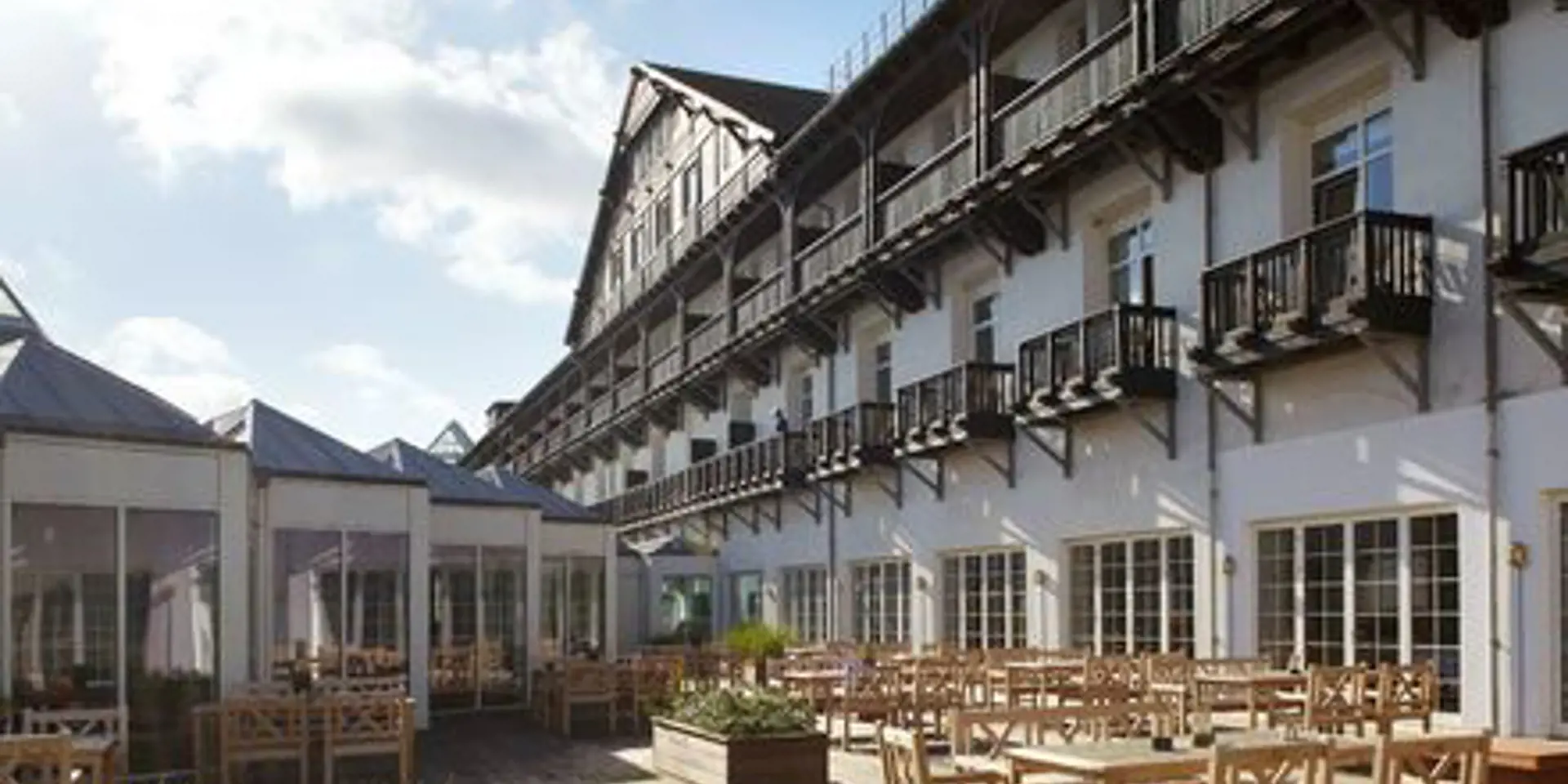
Includes per person per day:
Click the "See calendar and prices" button to choose dates and see the room selection.
See calendar and prices: Standard RateNdr. Strandvej 2, 3000 Helsingør
Show map
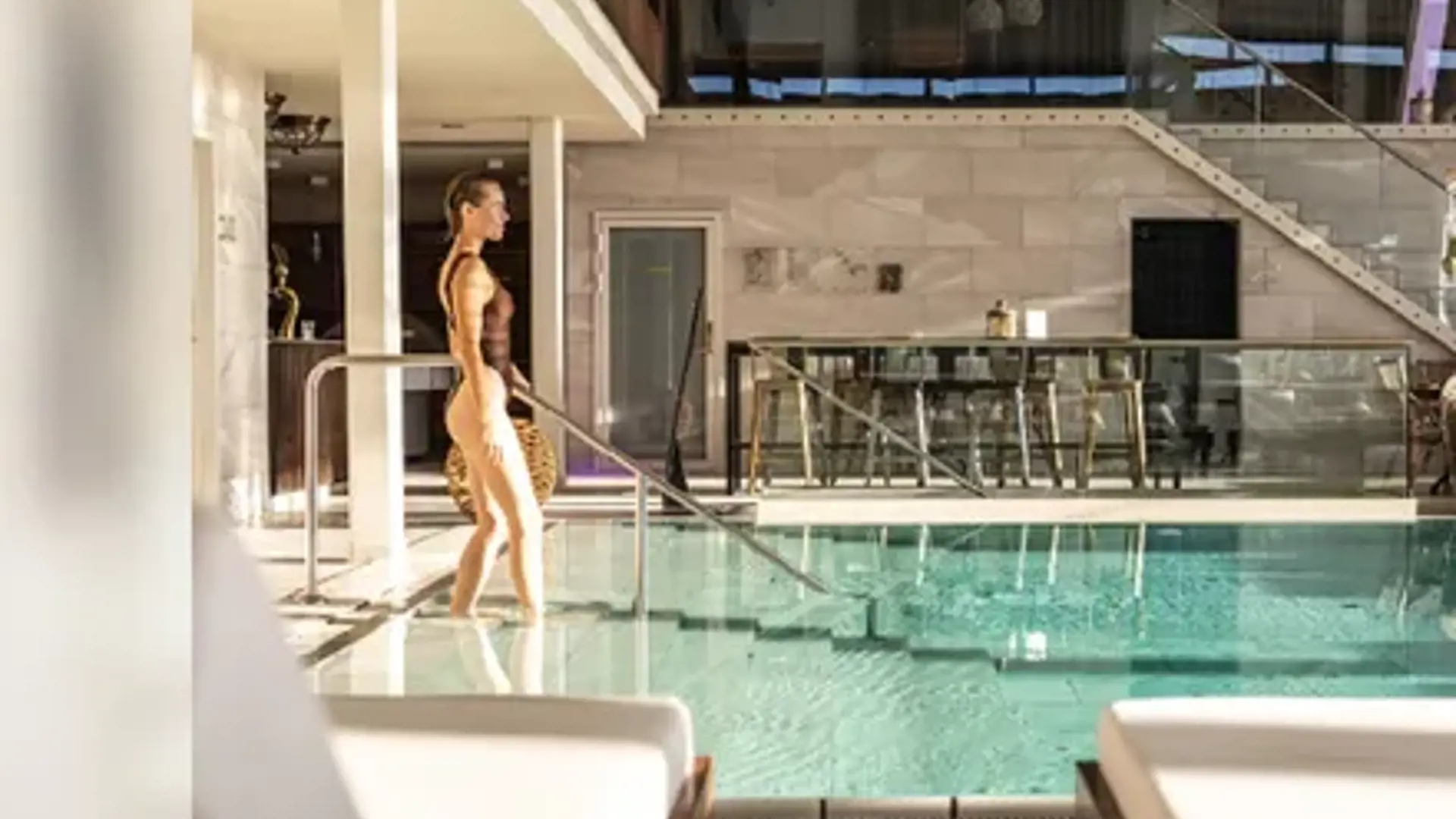
Inkludes per person per night:
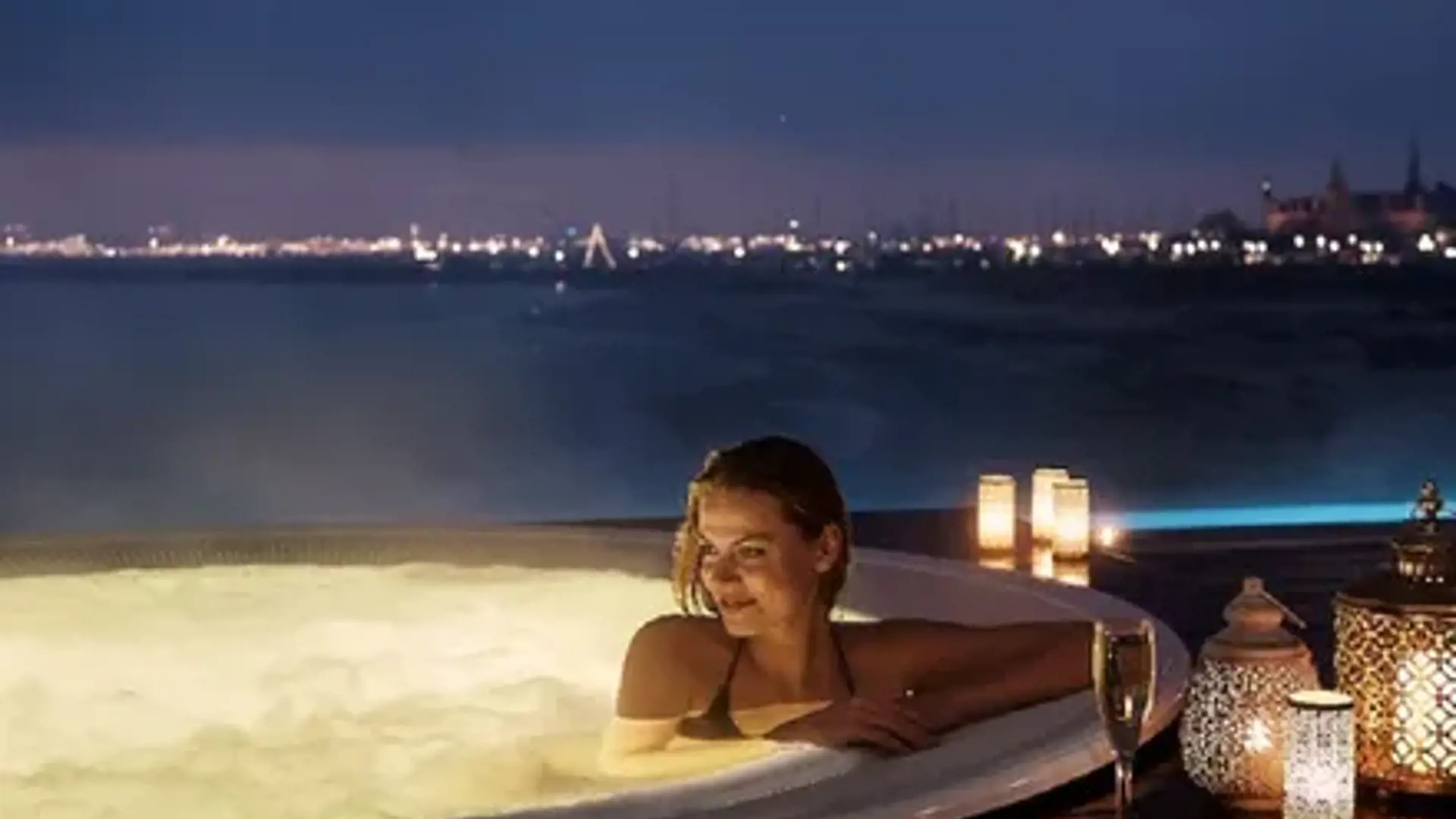
Inkludes per person per night:
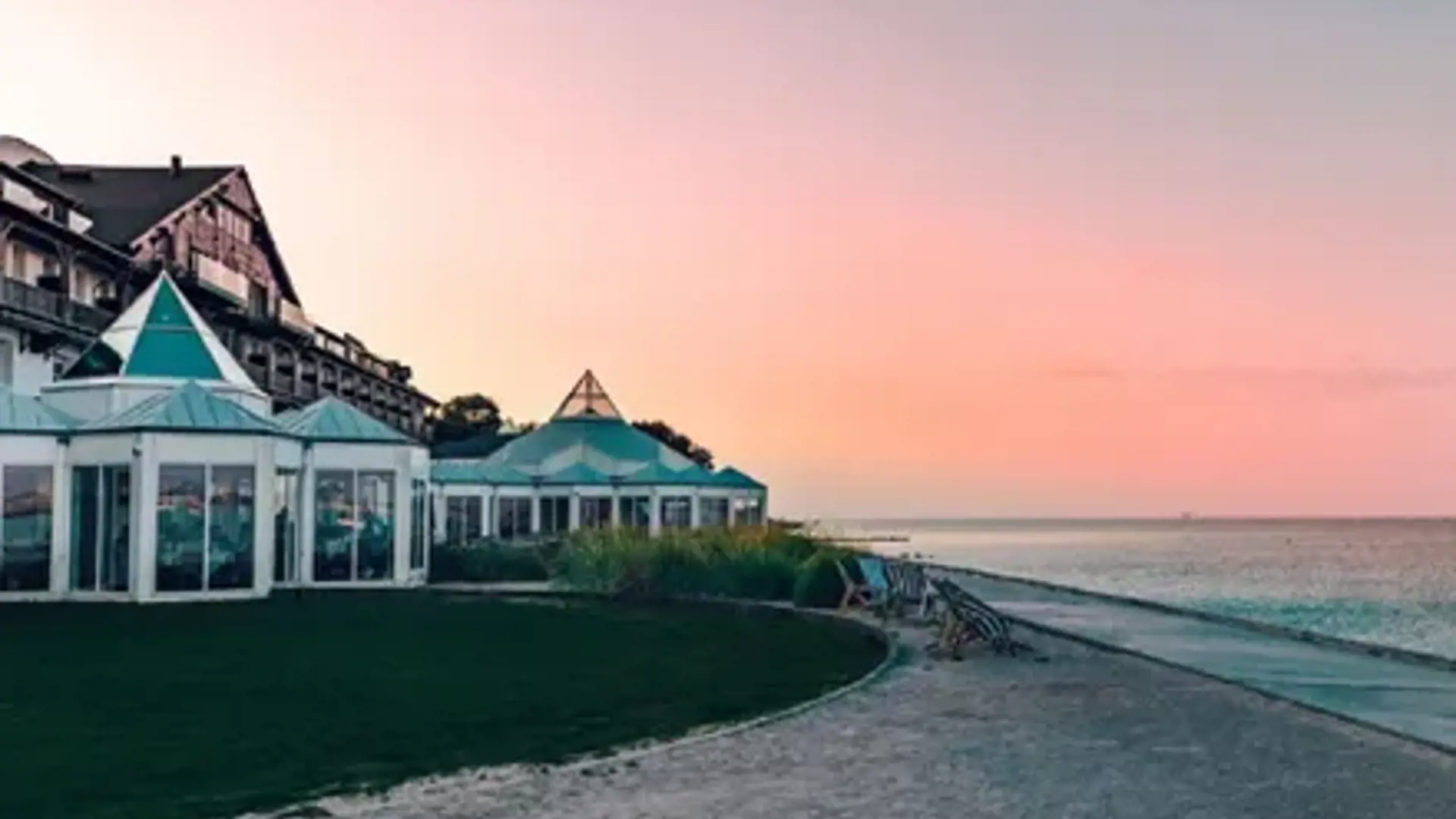
Inkludes per person per night:

Inkludes per person per night:
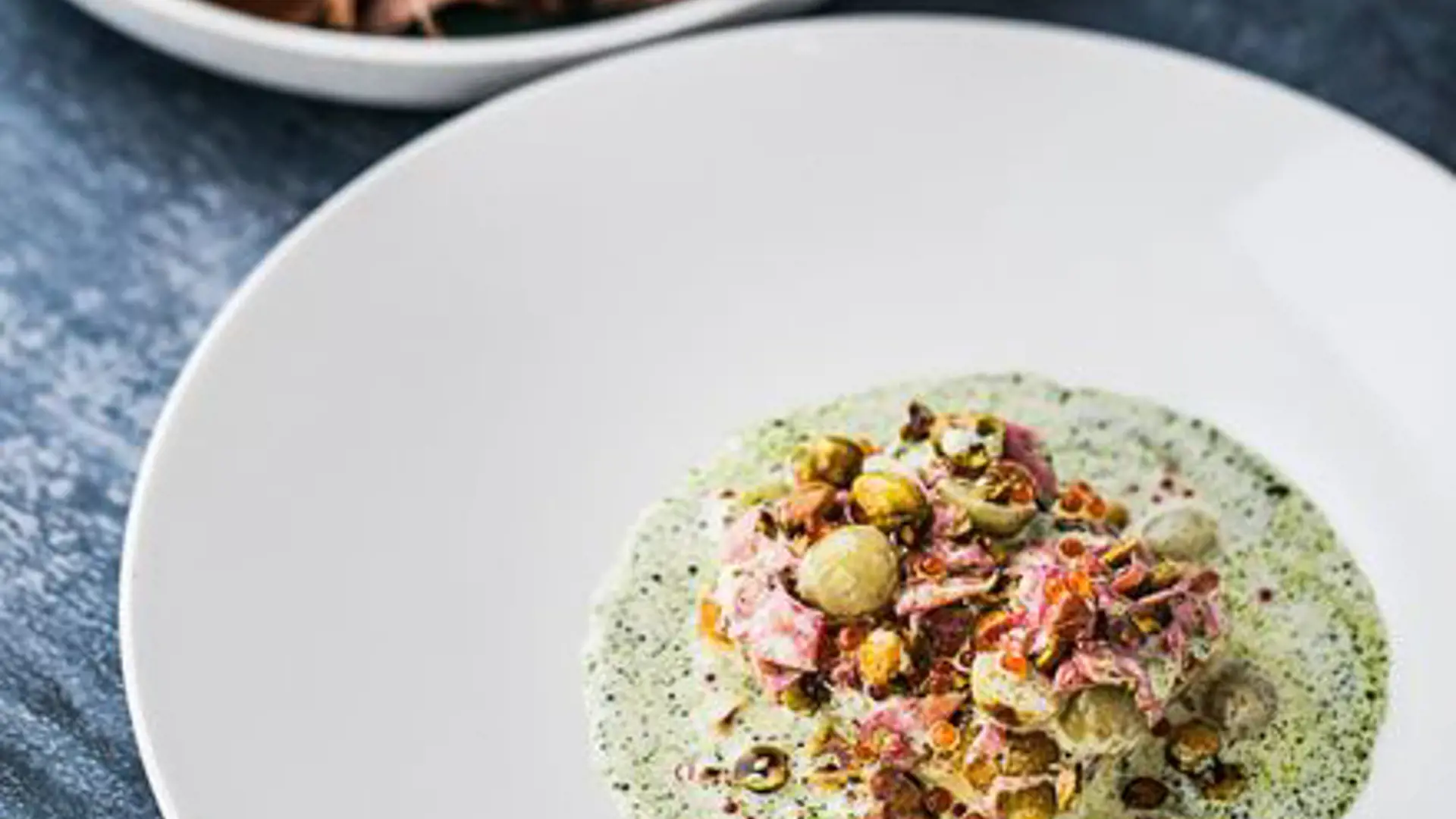
Minimum 3 days / 2 nights
Includes per person per day:
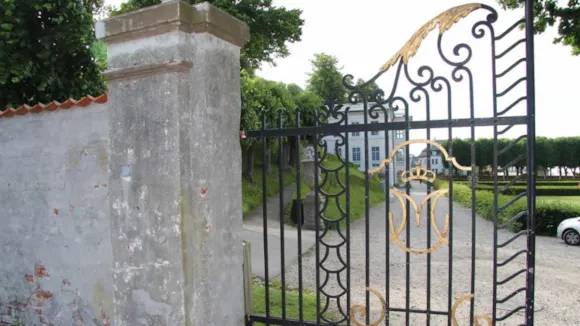
0.43 km
Marienlyst Castle was built in 1588 by Frederik II, who also built the Kronborg Castle. The original castle was a tower-like building, designed as a pleasure and hunting garden for the royal family. This striking country house was completed the same year that Frederik died, but many monarchs subsequently enjoyed the grounds, for both recreation and as a place to enjoy peace and tranquillity while they worked.
The current building was constructed between 1759-64 by eighteenth century architect Nicolas-Henri Jardin. The castle boasts a stunning and romantic garden that became famous for its beauty and magnificent views. Notable admirers included the famous fairy tale writer Hans Christian Andersen, who visited the garden in 1826.
Preserving history
After many years, large parts of the Castle fell into disrepair but in 2012 an association was established to help protect this impressive architectural achievement. With around 1200 voluntary members, Friends of Marienlyst Castle ensures that public access to the castle and gardens can continue, as well as maintaining the preservation of all the historic and architectural wonders inside and out.
The building's distinctive interiors contain craftsmanship of the finest quality, carried out by the country's most important royal court painters, stucco artists, sculptors, wood carvers, gilders and stone masons. Inside a host of treasures await, including decorative mirrors, grand chandeliers, gilded wood ornaments, wall paintings, tables and panels. Often left in the shadow of the more famous Kronborg Castle, we recommend you take time to experience Marienlyst, you will not be disappointed.
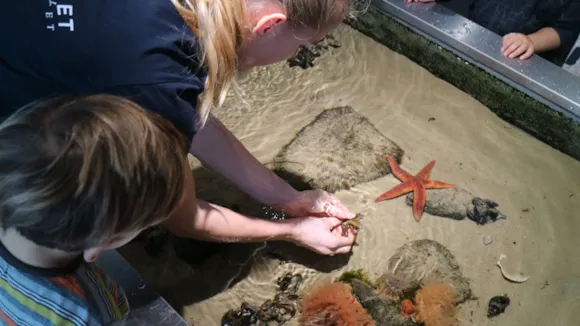
0.62 km
In the child-friendly “touch-tanks” you can pat a crab or hold a starfish in your hands. Come and see the animals being fed several times a day and participate in exciting sea activities during the holidays. There is always a guide present, ready to answer your questions about the animals.
There is fantastic animal and plant life in the Sound, and in The Water Laboratory at Elsinore harbour, you will get the opportunity to see and feel a small part of the Sound. Here you can get very close to the unique fish and wildlife in the Sound and see the fascinating habitats of the Sound. Try The Water Lab and get closer and examine life under the sea.
In Elsinore, you can come out on the Sound and experience Denmark's smallest whale up close. The population of porpoises has multiplied over the last 20-30 years and they thrive in the Sound, where there is plenty of food for the small whales. At Øresundsakvariet’s safari tours in 2019, guests saw porpoises on all the tours.
Take friends, family or colleagues on a safari and experience Denmark's smallest whale, or scout for the large Atlantic tuna that has returned to the Sound after decades of absence. There is room for 12 people on the boat
Øresundsakvariet works actively to protect the Sound and preserve the unique marines rich fish-, animal- and plant life. Among other things, Øresundsakvariet informs about the life in the sea which creates interest, which hopefully leads to respect for nature and a desire to take good care of it.
In addition, Øresundsakvariet also teaches thousands of children each year through their school service, the aquarium develops and participates in projects for nature conservation and engages in dialogue with politicians and opinion-makers about the unique wildlife of the Sound.
Did you know that we only know about 0.0001 per cent of the deep sea? Biologists expect that most of the Earth's species and habitats are beneath the ocean's surface, but knowledge of them is poor. The sea is secretive, rich in resources, fascinating, endangered, and is the basis of all life on earth. At the same time, the sea is one of the most endangered natural resources on the planet.
Life in the world seas is seriously threatened by, among other things, plastic pollution. The UN's 17 goals, which by 2030 will set us on a course for more sustainable development for both humans and the planet, among other things include the focus on marine life.
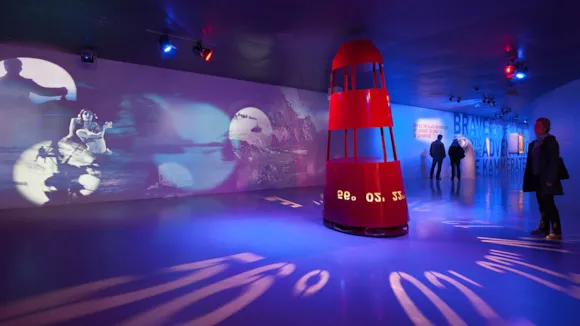
0.83 km
Some facts to set the scene: Denmark is surrounded by three different seas. It’s coastline stretches a total of 5,440 miles. And wherever you are in Denmark, you are never more than 52km from the sea.
Now you know why seafaring is such a big part of Danish culture, and why this museum is important. The Maritime Museum of Denmark presents an interactive experience exploring the country’s maritime history. Here, you find award-winning architecture, sensory exhibitions and a fascinating insight into Denmark's role as a leading seafaring nation over time. The focus is both on the great historical lines and the personal stories.
At the museum, you will hear about the mythology of shipping and the technology that has made it possible to navigate the oceans. You will also learn more about how shipping has tied the world together – from the flourishing trading period of the 18th century to the present global society where more than 90% of all commodities are transported by sea before ending in our shopping basket.
Since the opening of the museum on 5 October 2013, it has received several architectural and design awards, both for the exhibitions and the architecture which are positioned around the former dry dock. It was designed by Danish architects Bjarke Ingels Group (BIG), who won the competition to build a maritime museum within the walls of the dry dock with absolute nothing showing above ground to block the view of Kronborg Castle. BIG’s solution was to build a museum using the dry dock as the key attraction, functioning below sea level.
While visiting the museum, interactive exhibits allow you to feel first hand what it is like to control the world of trade, or try your luck as a merchant in the 18th century.
You can learn to navigate by way of the traditional tools of shipping or get a genuine sailor’s tattoo (it’s washable!), while children can play around in DRØMMESKIBET (the Dream Ship).
Take a break in the museum’s M/S Café where you can get delicious lunch dishes, hot and cold drinks and light refreshments.
The museum shop M/S Shop is an experience itself, offering interior design products, books, jewellery, clothes and toys. Everything is a good quality modern design, and relates to the exhibitions at the museum.
See opening hours below. The museum is closed every year on the 24th, 25th, 26th, and 31st of December and the 1st of January.
This attraction is free with Copenhagen Card - read more here.
After a visit to M/S Maritime Museum of Denmark, check out some of its neighbours like Kronborg castle, Værftets Foodcourt or Kulturværftet. Or you can try out the Elsinore Walk and explore the old and colourful streets of Elsinore.
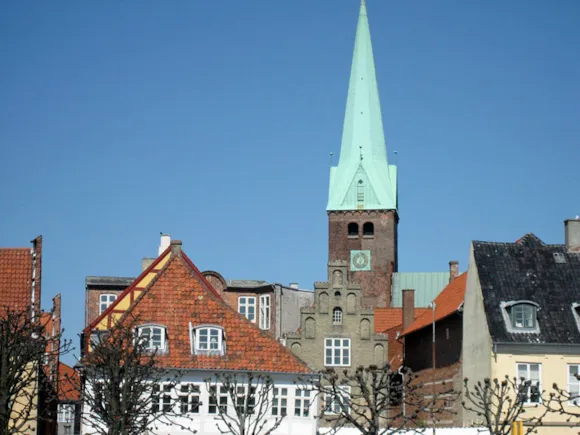
1.22 km
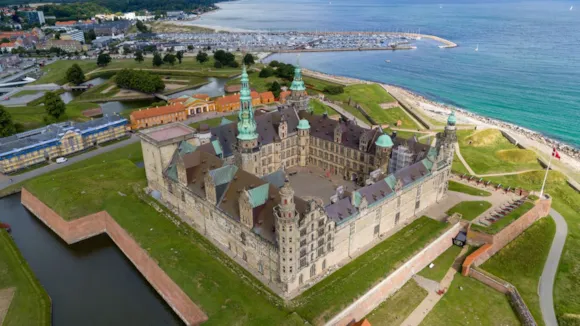
1.25 km
Only a few places in the world are surrounded by as much drama and history as Kronborg Castle. It is world-famous as the setting for Shakespeare’s play Hamlet and is on the UNESCO World Heritage List.
In Elsinore, with views across to Sweden, you find the setting for Shakespeare’s Hamlet facing the Sound. Once the home of kings and queens, a fortified castle with bastions and cannon batteries that controlled the water in the narrowest point between Sweden and Denmark, the castle's history is fascinating. Discover Frederik II's sumptuous ballroom, enjoy the magnificent tapestries and say hello to the mythical figure of Holger the Dane in the basement deep below the castle.
Kronborg Castle dates back to 1420 when Eric of Pomerania built Krogen, a fortress that was to control the entrance to Oresund and collect the lucrative Sound Dues from the passing ships. The Sound dues played an important role in Elsinore for more than 400 years. While the money went to the King, the trade, in connection with the Sound dues, made the town wealthy and famous all over the world.
Between 1574 and 1585, Frederik II built the sumptuous renaissance castle, Kronborg Castle, as a strong symbol of wealth and power. The Sound dues financed the towers and steeples, copper roofs, and sandstone ornaments. During the great period of Kronborg Castle in the late 16th century, sailors, businessmen, diplomats and aristocrats spoke of the magnificent castle and court in Elsinore with its pomp and splendor.
Kronborg Castle was ravaged by a devastating fire in 1629 which only left the chapel intact. Christian IV reconstructed the castle with extensive new Baroque decorations, however, in 1658 another accident hit Kronborg when the Swedes bombed and occupied and took many precious art treasures as booty.
Kronborg was fortified as a fortress with Kroneværket by Christian V in 1690, but since then the castle has virtually not been inhabited by royals. From 1785 until 1923, the castle was used by the military, and not until then it was thoroughly restored and returned to the greatness of Frederik II and Christian IV.
Shakespeare used Kronborg when he wrote his immortal play about the king's son Hamlet and today, in the rest of the world, the castle is better known as Hamlet's Castle. No one knows for sure whether Shakespeare ever visited Kronborg Castle, but he certainly heard the rumors of the decadent lifestyle of the court. It was documented that British players visited Kronborg several times during Shakespeare's time. These days, a Shakespeare Festival takes place at Kronborg Castle every August with open-air theatre and the castle as a backdrop.
UNESCO inscribes monuments, buildings, cultural landscapes and natural areas as a world heritage when they hold an exceptional value to humanity and need to be protected. Kronborg Castle entered UNESCO's World Heritage List in 2000. Several other Danish attractions are registered at UNESCO's World Heritage, eg the Par Force Hunting Landscape in North Zealand.
After your visit to Kronborg Castle, you could:
Get more information about what you may experience and see in Elsinore
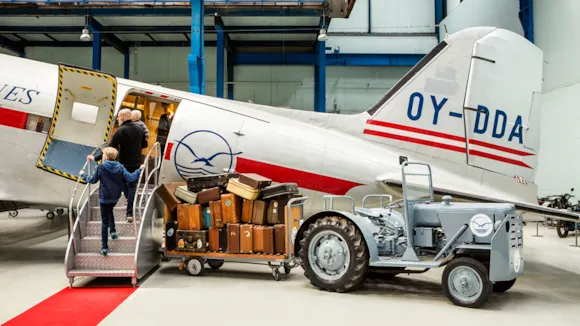
3.66 km
What did the very first cars look like? How about the history of the telephone - from the first of its kind to the smartphones we all know today? And what does a space capsule look like? Come and learn more about the fantastic and breakthrough technical inventions and the people behind them.
The museum has an impressive collection of steam engines, electrical inventions, bicycles, cars and aeroplanes. There is also a pewter workshop from the 1920s and fire and life-saving station from around 1960. The Danish Museum of Science and Technology invites you on a journey where bridges will be built between you and Denmark’s technological history.
The Danish Museum of Science and Technology is for the whole family. From the first exciting fascination of machines to the critical contemporary views of everyday technology to the nerdy insight into mechanics and function. At the museum, the objects form the basis of the stories and we will look at the first technical inventions, today’s technology and what the future may bring.
The Danish Museum of Science & Technology is more than 100 years old and some of the museum objects are even older – from extremely heavy and big computers the size of an elephant to small, pocket-sized smartphones. The world of technology is constantly developing, and we can only try and guess how the future robotic vacuum cleaners, virtual reality and cars will look like.
Please find more information on exhibitions, guided tours, open workshops and extra activities in all the school holidays on www.tekniskmuseum.dk
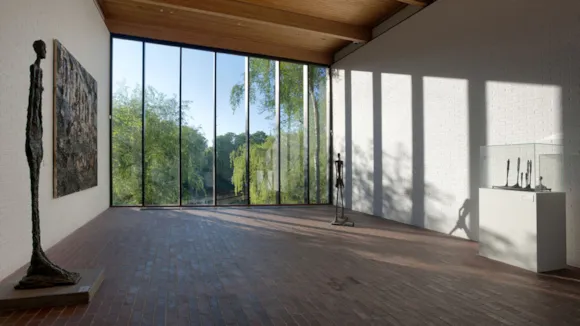
9.3 km
Louisiana Museum of Modern Art is located in Humlebæk, North Sealand, in a beautiful old park offering magnificent panoramic views of the Sound. The museum buildings lend themselves beautifully to the park, which is landscaped with open lawns, shady woods, a view terrace and a gorge down to the beach. The park provides a magnificent setting for Louisiana’s large sculpture collection.
With the help of Plan your journey, you can find the easiest and fastest way to get to Louisiana by public transport.
Louisiana’s collection of modern art dates from 1945 to the present day. It is one of Scandinavia’s largest collections and contains more than 4,000 artworks within virtually all genres, emphasising painting and sculpture. The collection is far too extensive to be displayed, but selected works are continuously on view in new dynamic contexts. Permanent highlights include the Giacometti Hall, the Jorn Room and the Kusama Installation.
In addition to the permanent collection, the Louisiana Museum of Modern Art features 6 - 10 major exhibitions annually. Here, the classics of modern art, as well as contemporary international artists and architects, are presented. In connection with the exhibitions, the museum publishes art catalogues in the form of Louisiana Revy and special catalogues.
The sculpture park is a major feature of any visit to the Louisiana Museum of Modern Art, no matter the time of year. The museum’s parkland location facing the Sound and the landscaped parkland provide optimal conditions for a varied and exciting exhibition of the collection’s approx. 60 sculptures.
With its relaxed atmosphere, the museum also offers a vibrant and dedicated cultural centre with a rich programme of activities and events for children and adults alike. The Children’s Wing is a universe dedicated to children, where skilled art intermediaries are responsible for child-friendly activities that relate to the current exhibitions. Adults can participate in guided tours, lectures, concerts, films, workshops, and literature festivals.
When it’s time for a break, the Louisiana Café offers hot and cold drinks, sweet treats or a lunch or evening meal—homemade dishes using prime seasonal produce.
In the museum’s sizeable two-level store, you will find a large and inspiring selection of new and classic items emphasising Danish and Scandinavian design. Interior, clothing, books, posters, graphics, toys and more.
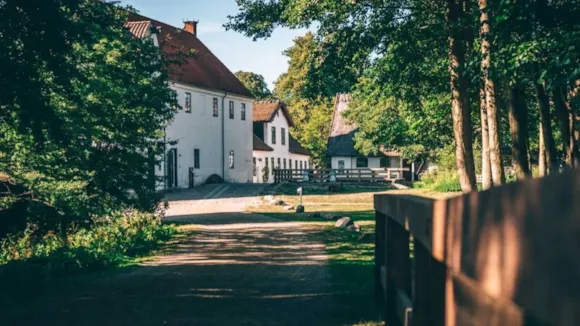
14.13 km
Located north of Esrum Lake, surrounded by meadows and forests, and with access to the Royal North Zealand National Park, Esrum Abbey was the centre of the Cistercian order in Denmark in the 12th century and later gained great significance for the Danish royal power.
Behind the red walls lies a history of power, religion, and the monks' contemplation and meditation. Accompanied by the sounds of the liturgical prayers, you are invited into the holiest space, to the monks' prayers and chants, for a sensual and extraordinary experience through sound and light.
The monastery garden overlooks the meadows and features, among other things, a recreated herb garden. It is a modern version of medieval gardens, showcasing over 150 different plants and telling the story of how the monks aimed to create a paradise on Earth. The plants were used for household purposes as well as for medicinal and religious purposes.
Today, the kitchen at the Mill Café still uses plenty of fresh herbs and offers a delicious and diverse menu. Enjoy your lunch or coffee indoors in the old mill courtyard or sit outside in the green café garden.
If the children need to move around, take them to the nature playground where they can immerse themselves in a medieval children's universe. The monastery shop offers tempting products from Esrum Abbey, such as beer, spirits, honey, medieval mustard, and delicacies from other European monasteries.
Esrum Abbey offers unique experiences throughout the year, including beer festivals, pilgrim walks, guided tours, culinary experiences, Christmas markets, and plenty of children's activities during school holidays. Keep an eye on the calendar on Esrum Abbey's website, which is regularly updated with events.
In the exhibition 'Mankind in the Monastery,' you will be transported back in time and become part of the community at the monastery. Afterwards, it's time for a virtual reality journey that takes you through the now vanished monastery buildings, corridors and passageways, outside in the beautiful frater courtyard, and into the magnificent monastery church. Here, you can truly sense what faith meant in the Middle Ages, what was at stake, and why the church became so powerful.
The monastery is an experience, but it also serves as a great starting point for walking, cycling, or hiking in the Royal North Zealand National Park. Several marked routes start from the monastery, including cycling route 48, which passes by the castles of North Sealand, the Tisvildevejen hiking route, and the orienteering route in the northern part of Gribskov.
Starting from Esrum Abbey, you can embark on three bike tours. Experience the Top Træ (Top Tree) tour, the Birds Tour to Esrum Lake, or the Great Pond and Væltningen tour. You can also explore the "3 museums and one bike" tour, enjoying three significant museum experiences while immersing yourself in the North Sealand landscape. Visit Munkeruphus, Rudolph Tegner's Museum, and Esrum Abbey simultaneously. Read more about the tour and purchase your ticket online.
Esrum Abbey had great significance for Scandinavia in the Middle Ages. The monastery was consecrated in 1151 by the Cistercian Order (a Catholic order) and had daughter monasteries in Denmark, Germany, and Poland. It didn't take long before Esrum Abbey became the largest landowner in North Sealand. The monks prayed for the Christians and shared knowledge about medicine and plants, among other things.
However, during the Reformation in the 16th century, the monastery was dissolved, and the buildings were demolished. A major renovation in 1996 led to the opening of Esrum Abbey to the public in 1997. Learn more about the history of Esrum Abbey. Find out more about the history of Esrum Abbey.
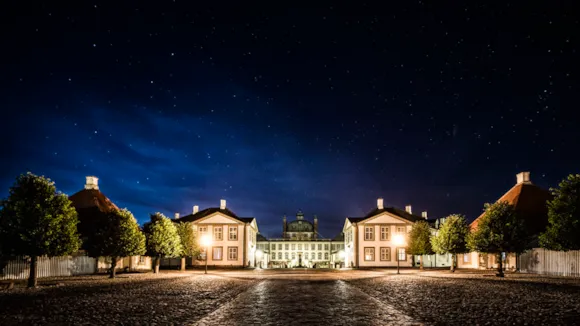
14.75 km
Fredensborg Palace, or as it translates into “the Palace of Peace”, got its name as a commemoration of the ending of The Great Northern War in 1722, when the palace was built. The palatial complex was gradually constructed through the 1700s. It was designed by the best Danish architects of the time, J.C. Krieger, Nicolai Eigtved, L. de Thurah and C.F. Harsdorff. The palace and the palace garden as an entirety exemplify the French baroque style – and therefore, the palace is often referred to as Denmark’s Versailles.
The palace is often the setting for important events in the royal family, including weddings, anniversaries and birthday parties. Here heads of state on official visits are received, and foreign ambassadors present their credentials to the Queen. It has been a long-held tradition for visiting state leaders to inscribe their names on one of the window panes of the palace using a diamond pen.
Fredensborg Palace’s garden is one of Denmark’s most prominent historical gardens. Long, straight avenues extend from the palace in a star formation, a characteristic of the garden's original French baroque style known from Versailles. Some avenues have recently been recreated, including Brede Allé, which was opened in 2013 after an extensive restoration. On your visit to the beautiful garden, you will see numerous sculptures. Between the avenues, you find large forested areas with twisting paths dating back to the end of the 1700s and mid-1800s, where almost all baroque gardens were converted to the Romantic style.
A part of the palace garden is reserved for the royal family. Here you can, amongst other things, visit the herb garden, which provides fresh vegetables and flowers for the royal household, and the modern orangery, which was inaugurated in 1995. This part of the garden is open to the public during some of the summer holidays. Check the dates at kongeligeslotte.dk.
A unique experience in Frederiksborg palace is the Norseman's valley, where 70 sculptures of Norwegian and Faeroese farmers and fishermen are presented. The valley was comprehensively restored and re-inaugurated in 2002.
You can go on a guided tour and visit parts of the palace, the palace chapel, the Private Garden and the Orangery during some summer holidays. Check the dates at kongeligeslotte.dk. Read more and buy your tickets for Fredensborg Palace for Fredensborg Palace.
During the same period, you can enter the Private Garden for free from 9.00 -17.00. The surrounding palace garden is open to the public all year round.
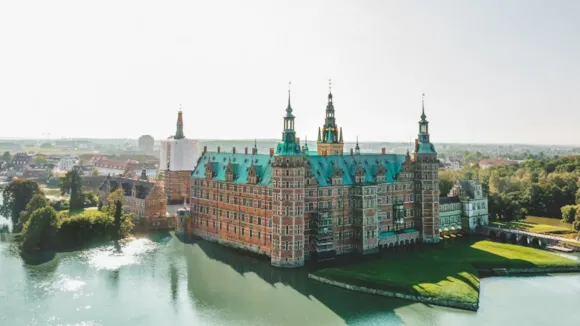
22.54 km
Frederiksborg is named after Danish king, Frederik II, who built the first castle on the site. But it was his son, Christian IV, who built the magnificent building we see today, the largest Renaissance castle in the Nordic region.
Find admission prices and opening hours at Frederiksborg Museum of National History
Frederiksborg Castle is home to the Museum of National History. Through paintings, portraits, furniture, and handicrafts from different stylistic periods, the museum tells the story of 500 years of Danish history.
On a tour through the castle's many beautiful halls, you will meet kings and queens, nobles and bourgeois, events and epochs that have all helped shape Denmark's development and history.
With changing exhibitions of Danish and international character, regular Sunday tours, and family activities during school holidays, the museum puts Danish history into perspective and keeps the dialogue with the past alive.
Events and exhibitions at Frederiksborg Museum of National History
Using publictransport.dk, you can find the easiest and quickest way to get to Frederiksborg Castle by public transport.
The Knight's Hall is located on the second floor above the castle church and is one of the highlights of the castle. It has been recreated as it was during Christian IV's time and is splendidly furnished so that you can vividly imagine the royal feasts of the past with pomp and splendor.
Look up, for the ceiling is lavishly carved and painted with great detail that is worth studying closely. Beautiful tapestries and portraits of the Glücksburg royal family hang on the walls, one of the newest being Niels Strøbæk's painting of three generations: Queen Margrethe, Crown Prince Frederik, and Prince Christian.
In the Audience Chamber, high and low have been able to appear before the king since the 1680s. The Audience Chamber was spared in the devastating fire of 1859, and therefore you can experience a unique example of an original Baroque interior from Christian V's time. The Audience Chamber reopened in May 2016 after extensive restoration work over four years.
A curious detail in the Audience Chamber is the built-in elevator, which was installed in 1692 for Christian V. Using a pulley system, the king could be hoisted from the Audience Chamber in a chair and directly down to the Mint Gate, and discreetly leave the castle in a carriage.
Like the Audience Chamber, Frederiksborg Castle Church was largely spared from the destruction of the castle fire in 1859, so you can experience the castle church almost as it was when the absolute monarchs were anointed here.
Today, everyone has access to worship services and concerts in the historic space. From the gallery walkway at the top, where coat-of-arms of elephant knights and grand cross knights of the Order of Dannebrog are continuously hung, there is a fantastic view of the church space.
On the castle's third floor, Danish history is brought right up to the present day. Here you can see portraits, historical paintings, and furniture from the 20th and 21st centuries, including portraits of politicians, sports stars, musicians, writers, and other cultural personalities. The rooms are simple and provide a contemporary backdrop for modern portrait art.
Also read: 7 Things to Experience at and Around Frederiksborg Castle
Frederik II laid the foundation when he acquired the Hillerødsholm manor in 1560 and built the first version of Frederiksborg.
His son, Christian IV, who was born and grew up in the castle, had greater ambitions: Between 1600-1620, he demolished his father's castle and erected the much larger and beautiful Renaissance castle that we can see today. The castle is an expression of Christian IV's position as a powerful European monarch in his time, built to impress Europe's kings and princes, and no expense was spared.
Royals lived in Frederiksborg until the end of the 18th century, after which the castle was considered outdated. However, Frederik VII brought new life to Frederiksborg in the mid-1800s when he moved in with Louise Rasmussen, Countess Danner.
The couple modernized the castle with several fireplaces and stoves to heat the large rooms, but it turned out to be catastrophic: One of the heat sources ignited the great castle fire in 1859, which burned out most of the interior. Only the Castle Church and the Audience Hall survived the fire.
During the reconstruction, the royal family no longer wanted to live in the castle. Carlsberg's founder, brewer J.C. Jacobsen, suggested creating a museum of national history in the magnificent setting and offered to finance it. The Museum of National History at Frederiksborg was founded in 1878 and has since been an independent part of the Carlsberg Foundation.
Find all necessary information to plan your visit to Frederiksborg Castle. Read about opening hours, admission, parking, accessibility, transport, photography, museum shop at Frederiksborg Castle.
The Museum of National History recommends that you buy your entrance ticket before your visit.
Buy your ticket to Frederiksborg Castle
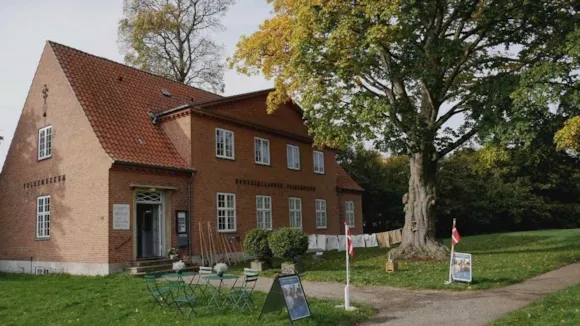
22.18 km
Participate in traditional children's games both outdoors and indoors. During the summer holidays, you can join the Historical Olympics at Hillerød City Museum, where you can try stilt walking, riding a hobby horse, knocking down cans, and hula-hooping in the scenic surroundings of Frederiksborg Castle Garden.
Indoors, Tidens Gade offers a journey 100 years back in time, where children can experience life as it was back then. In the grocer's shop, they can handle goods, turn the handle of an old cash register, weigh coffee, and explore all the products from grandpa's time. At Have-Grethe's nursery, they can swing copper pots on the cast iron stove, use a washboard, and take a ride with the rag doll. Visit the old-fashioned school with chalk, slates, and school benches, and perhaps grandma can tell about her school days.
Creativity can be unleashed with paint, chalk, and building sets. Children can paint their own postcards in the old painting workshop or build machines with Tekno, just like at the large Nordsten Machine Factory.
History
Explore a small exhibition that shows Hillerød's development over time - from medieval village to market town around Frederiksborg Castle and up to the present day. At the Graphic Museum, you can see old machines from the time when books and newspapers were printed with hand and machine typesetting.
A walk in Frederiksborg Castle Garden allows you to experience Hillerød's history through buildings, roads, homes, and shops along the Castle Lake and into the town.
Food & Shop
Take a break in the café, which offers both indoor and outdoor seating. Here you can enjoy coffee, tea, cocoa, juice, soda, cookies, old-fashioned candies, and Hansen's Ice Cream. The museum shop sells old-fashioned toys, sweets, books about Hillerød's history, postcards, posters, and cut-out sheets.